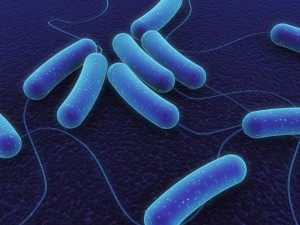With the recent E. coli outbreak linked to romaine lettuce, and the current outbreak of E. coli O103 infections that have sickened dozens in the southern United States, many are wondering how investigators solve these disasters.
 It’s a tribute to public health officials that many outbreaks are solved, and the responsible foods or food safety lapses are identified. Outbreaks that happen at restaurants and gatherings are investigated differently from outbreaks that are linked to specific contaminated foods, such as the Salmonella outbreak in Minnesota linked to unpasteurized cheese, because many more variables are in play.
It’s a tribute to public health officials that many outbreaks are solved, and the responsible foods or food safety lapses are identified. Outbreaks that happen at restaurants and gatherings are investigated differently from outbreaks that are linked to specific contaminated foods, such as the Salmonella outbreak in Minnesota linked to unpasteurized cheese, because many more variables are in play.
I attended a webinar sponsored by Fight Bac! and the Partnership for Food Safety Education in 2013. Bill Wharton of the Public Health – Dayton & Montgomery County in Ohio spoke about the E. coli O157:H7 outbreak that happened in 2012 in Germantown. A picnic sponsored by Neff’s Lawn Care sickened 79 people in July. Fourteen people were hospitalized; three developed HUS, and a 73-year-old man died as a result of infection. Despite an intensive investigation, the source of the pathogenic bacteria was never found.
Mr. Wharton said the lengthy investigation process begins with an incident command system established with the Health Commissioner, peopled by the medical director, nurses, sanitarians, epidemiologists, and public information officials. A preliminary analysis is conducted to confirm the existence of the illnesses, verify the diagnoses, describe the outbreak and formulate hypotheses. Officials then search for cases, collect samples, analyze data, test the hypotheses, intervene and follow up with victims and those responsible for the food, and then communicate with the public and issue a report.
Every patient who agrees to talk to officials is interviewed with an extensive questionnaire. Scientists must determine the incubation period, identify possible food items, symptoms, date of illness, and time of onset. In the Neff’s Lawn Care picnic outbreak, 65 people and 52 controls (people who were at the picnic but did not get sick) were interviewed.
The well at the picnic site tested negative for E. coli; the well where the hogs were cooked also tested negative. The USDA did drag samples on the environmental sites where the hogs were produced and slaughtered. No leftover foods were available for testing because the event took place on July 3, 2012 and the outbreak wasn’t identified until July 9, 2012.
Despite all of this work, the cause of the outbreak was not identified. More than 300 carry-in dishes were supplied by picnic attendees, and it is impossible to know the conditions of food preparation at individual homes. Officials interviewed many people who brought the food. Some food handling practices described were wrong. The picnic was not a regulated event that required a license.
As a response to this outbreak, the Dayton & Montgomery County Health Department has established a “Food Safety for Groups and Outdoor Events” brochure to help prevent future events. You can also download a Volunteer’s Guide to Food Safety put out by the USDA. If you plan to sponsor a potluck gathering, protect your guests and read through these brochures. And always follow food safety guidelines whenever you are preparing and serving food.
Mr. Wharton’s final advice was: cook all ground beef to 160°F, avoid cross contamination between raw meat and other ingredients, always wash produce before preparing it, don’t drink unpasteurized milk and juice, and always wash your hands thoroughly before preparing food and eating.





Linda, thank you for attending the Fight BAC! Brown Bag Webinar sponsored by the Partnership for Food Safety Education.
We were honored to have Bill Wharton, a dedicated public health professional, provide a case study of what happened with the July 3, 2012 outbreak in his agency’s jurisdiction. We hoped to highlight for health and food safety educators the complexities of safe food handling related to a community event, and to highlight some of the unique aspects of food safety at picnics. We welcome health and food safety educators to join our e-list at our website so that they can receive notices of future free Partnership webinars. The next one will be in September. Thank you!
Thank you for sponsoring that webinar. I learned a lot and am happy to pass it on.